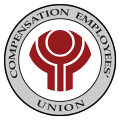Committees
Elected Compensation Employees’ Union officials sit on a wide array of Joint Committees with the Employer to discuss and promote our Members’ interests on non-grievance issues, including: Workload; Harassment; Drug & Alcohol; Return to Work; Mental Health; OHS and more.

Finance and Investment Committees
Michael Hess, Treasurer
The CEU Treasurer acts as Chairperson of both the Finance Committee and the Investment Committee.
The management of CEU finances is guided by general principles of fiduciary responsibility. This is similar to being managers of a trust fund. CEU elected Executive Board members are entrusted with the care of your CEU money and CEU property.
There are two parts to this financial management: the income of the union (based on dues and investment returns); and, the spending authorized by the union (annual operations of the CEU office). Generally, the Treasurer monitors income/spending and makes financial recommendations to the Executive Board.
Michael Hess was elected CEU Treasurer in November 2019.

Drug & Alcohol Committee
James Morrison
Representatives of management and the CEU jointly administer the Alcohol and Drug Policy. James Morrison currently represents the CEU on the committee, Peggy Tunks represents the WCB.
The objective of the Drug & Alcohol program is to provide employees with the opportunity and support necessary to achieve a full recovery and return successfully to work with their full range of duties and responsibilities. Employees are encouraged to participate in the program before their substance abuse/dependence has become an issue in the workplace.
The committee develops policy and procedures, makes recommendations to senior management on how to ensure WorkSafeBC complies with the B.C. Human Rights Code and the Canadian Charter of Rights and Freedoms. The committee makes recommendations on education and awareness sessions for employees, managers and peer supports.
Confidentiality is a foundational principle for the success of this program, therefore there is no reference to individual cases in Committee meetings.

Harassment Committee
Paul Bergin, Co-Chair
Paul Bergin has been proud to serve as co-chair of the Harassment Committee for over 2 years. His 4 ½+ years’ experience as a lead officer for the Prevention Bullying and Harassment Team has provided him with the knowledge and skills needed to manage the position with clarity and compassion.
The committee is a joint advisory and problem-solving body which reports to both the Compensation Employees’ Union (CEU) President and to the Workers’ Compensation Board (WorkSafeBC). The committee has three key functions: a complaints function, a joint policy-making function, and an awareness-raising function.
The committee works as a panel for individual complaints, both member and excluded. Any employee of WorkSafeBC can contact any member of the Committee at any time and be assured of a confidential space within which to discuss their concerns. Complaints are dealt with as per the procedures available under the WorkSafeBC/CEU Harassment Policy and SAF 3-3 Workplace Bullying and Harassment procedures. Members, whether they are the complainant or respondent, will be provided support throughout the process.
The committee also operates as a policy body. Policy and procedures for the prevention of harassment in the workplace are jointly agreed upon by the presidents of both the CEU and WorkSafeBC. Any member of the CEU who have concerns regarding the policy and procedures can contact any CEU Committee member or the CEU President.
Finally, the committee jointly develops strategies to prevent harassment in the workplace. These can include training materials and information sessions to bring awareness to all employees of WorkSafeBC.
Harassment may be physical, psychological, or a combination of the two. It may be based on a characteristic such as gender, race, ethnicity, sexual orientation, sexual identity, or another characteristic. It may also be a pattern of verbal comments. Harassment may be one incident which has a severe impact on the target or it may be repeated incidents. The unwelcomed behaviour may be direct or indirect, obvious or subtle, and can take place by written, verbal, physical, electronic, or any other means of expression.

